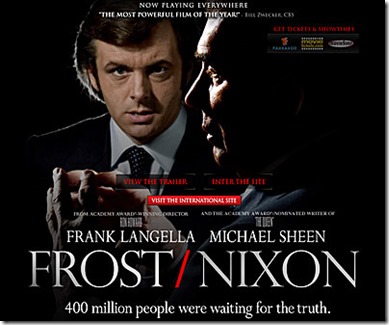Advanced Media Training Technique: The Filibuster
On March 25, 1977, disgraced ex-president Richard Nixon sat down for his second interview with English journalist David Frost.
As captured in the excellent 2008 film Frost/Nixon, Nixon wanted to control the interview and avoid the thorniest questions. Since the interviews were time-limited, Nixon calculated that he could run out the clock by telling longwinded and barely relevant stories.
The producer of the televised interviews, John Birt, noticed Nixon’s strategy in the first interview and wanted to prevent him from using it in the second.
He told Frost:
“Far too soft, David. You have got to make him more uncomfortable tonight. You can start by sitting forward. You’ve got to attack more. If he starts tailing off, bang!, jump in with another question. Don’t trade generalizations. Be specific. And above all, don’t let him give these self-serving 23-minute homilies.”
Although Frost ultimately won the exchange by preventing Nixon from going on another 23-minute monologue, there’s a lesson here for media spokespersons: sometimes, the filibuster works.
Imagine, for example, that you’ve been booked for a six-minute radio segment. You know that the host disagrees with your point-of-view, and his style is to ask adversarial questions that make the guest look bad. If you give slightly longer answers than is normally advisable, the host would be able to ask fewer questions—and you’d be able to share more of your views directly with the audience.
That’s not to say that you should attempt a Nixon-length answer. But if your answers are, say one-minute each instead of 40-seconds each, the host would theoretically be able to ask two fewer questions.
The host may try to jump in and interrupt you. You might allow the occasional interruption (if you try to override him too much, the audience may resent it). But you can also stand your ground and assert yourself by saying something such as:
“You asked a fair question, so please give me a moment to answer it.”
“I’m answering your question, but need a few seconds to give some background your listeners will find useful.”
“I really think this is important and hope you’ll give me just a moment to share my response.”
As with any other technique, be judicious with this approach. View it not as your new media modus operandi, but as a useful tool you can deploy at strategic (and probably rare) moments.
Finally, keep your audience in mind. Too much of a good technique can undermine your entire interview—so make sure your longer answers are packed with value for the audience.
If my mother wrote today’s tease, it would say: “My son works SO hard writing this blog every day. Won’t you please support him by signing up for his email newsletter? Just enter your email address in the upper right corner of the blog. Now, was that really so hard?”





The filibuster can work well but it is for professional drivers only. We once had a high profile client agree to a talk show host on the condition that he not ask about her romantic life, and he and the producer agreed. Of course, that was the frist question. She just sat there with her Smith grad and former State Department diplomatic elegance and said nothing while the host and control room freaked over the dead air. She was cool, calm and poised while the host lost his cool with the tables turned. He finally got it, apologized on air and then continued the interview. It became a national news story. This a risky move best done by only professional drivers, but sometimes necessary.